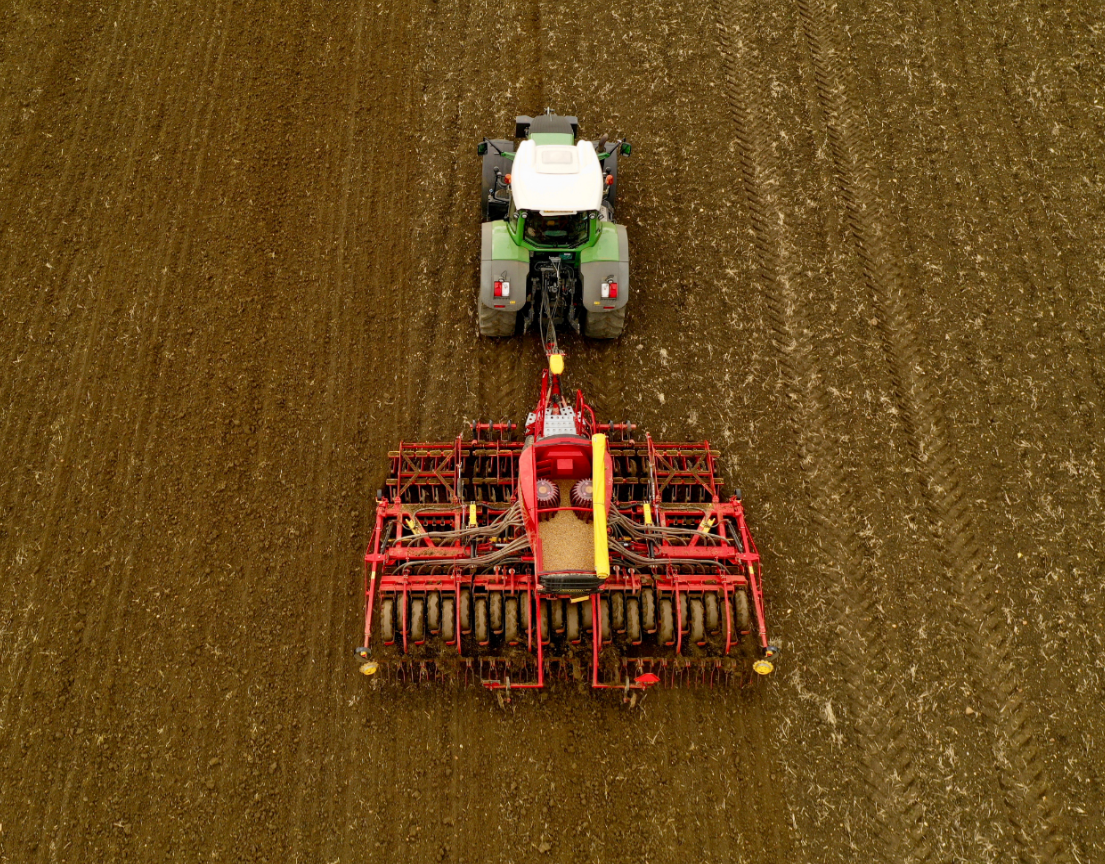Considerations for late drilling in wet conditions
During the recent visit from Storm Babet, exceptional levels of rainfall fell in a short period and saturated a lot of land in many parts of the UK. The concern now – particularly with more rain on the way – is the interruption caused to drilling progress, with some fields already destined for spring cropping. Crops drilled more recently have also been affected by waterlogging and significant runoff, which causes ruts and the loss of seed.
If you've found you're experiencing some of these issues in the aftermath of such severe rainfall, you're probably wondering what the best course of action is. Depending on your situation, there are a few options that could still mean you're able to get a crop in the ground and off to a good start.
Crop failure
If your crop fails, you'll most likely be thinking about drilling a spring crop once conditions improve. Re-drilling in the late autumn/winter may be possible on some land types, but there are important considerations you should make around seed rates and variety choice.
If drilling wheat from November onwards, you should increase seed rates to over 400 seeds/m2. When calculating seed rates, consider a lower establishment percentage (this can be as low as 50% in very poor conditions).
What varieties can I sow in late autumn/winter?
If a crop is drilled well in January, it'll probably perform better than a crop forced into a poor seedbed in November. The key thing is not to be led entirely by calendar date and rush to sow crops now given conditions are as they are.
'Drill date' trials have shown that drilling a suitable winter wheat variety through to February is still likely to out-yield a spring wheat variety drilled in the same period. However, if the date for safely drilling winter wheat has passed, I recommend you switch to a spring variety of wheat or change cropping plans.
Varieties such as KWS Extase, Skyfall, Champion and KWS Dawsum are all good performers in a later drilling slot. Skyfall specifically has the longest drilling window which lasts to the end of February.
I recommend a seed treatment like Vibrance Duo when drilling late in the season. It has been proven to consistently protect yield across multiple seasons and in a delayed drilling situation it has delivered a 0.34t/ha increase in yield, providing faster and improved emergence. You can find out more about Vibrance Duo and how it performed in our 2023 trials here.
Cultivation considerations
The impact of recent weather will mean considering any impact on herbicide performance and subsequent applications. I recently wrote a blog covering the use of pre-emergence herbicides in wet conditions, which you can read it here.
If your crop with an applied herbicide fails but you'd like to drill another crop after it, you'll need to make sure you follow the label requirements to avoid any residual herbicides getting into the following crop. In this case, you may need to deep cultivate or plough your fields.
On wet soils, ploughing would be the preferred and more practical option. Direct drilling may be an option for some farms but again, if you choose to do this the label requirements on a previously applied herbicide must be considered.
Late-drilled crops that have been direct drilled can potentially suffer from open slots and smeared soil in the bottom of the coulter row. This can cause water pools which can eventually result in seed loss to slugs or water damage, as well as reducing overall herbicide safety.
Although broadcasting seeds can be tempting in extreme circumstances, a Frontier trial in 2020 showed a 1.7t/ha yield drop using this method over drilling. You can see this demonstrated in the graph below.
Late-drilled crops will require extra TLC in the spring
Rolling a crop after drilling is an unlikely option if you decide to sow in November onwards. However, rolling in the spring is much more likely given conditions should be more favourable. Rolling should be done before the crop reaches Growth Stage 30 in order to aid root-to-soil contact and encourage further tillering too. Doing it any later will potentially damage the crop.
It is worth noting that some varieties, such as KWS Dawsum, have slow development in the spring but have a high yield potential when drilled late. In other words, the speed of development does not necessarily determine overall yield, though it is something you should consider when planning first nitrogen applications.
All late-drilled varieties will benefit from an application of phosphite at the earliest opportunity, giving it ample time to travel in the spring to aid root development. A good option here is Gro-Plan P; it is a biostimulant made up of foliar phosphite and is suitable for a range of crops.
It's important to think about disease pressure too. For example, varieties with poor yellow rust scores, such as Skyfall, will be more susceptible to the disease in the spring when drilled late.
Summary
Weather, unsurprisingly in agriculture, remains an ongoing challenge to contend with, but these more significant events and the repercussions that follow sometimes need a little more thought as typical strategies or next steps can risk doing more harm than good.
I hope this blog offers a solution that suits the situation you find yourself in, but if in doubt it's always a good idea to seek sound, professional advice.
If you'd like more help navigating the challenges brought on by the recent wet conditions, you can contact your local Frontier agronomist or get in touch.
As a subscriber, you’ll receive email alerts each time a new blog is published so you can always stay updated with the latest advice and insights from our experts







Comments